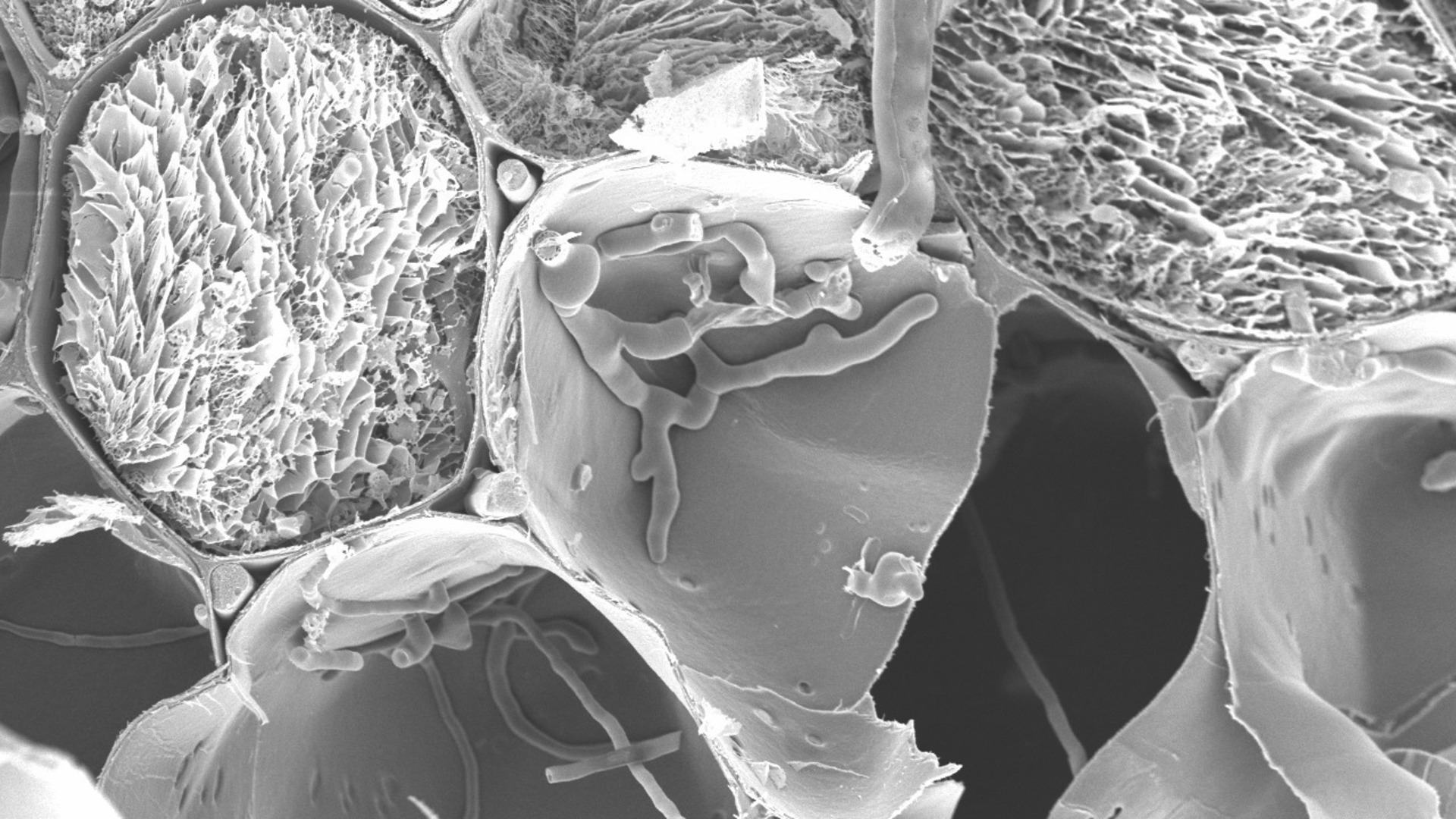United Kingdom
14 February, 2025

Researchers investigating the globally important fungal pathogen Fusarium graminearum, the primary cause of Fusarium Head Blight disease in small-grain cereals, have discovered that the mycotoxin deoxynivalenol (DON) plays a crucial role in spreading the infection. DON, which is notorious for contaminating wheat grain and posing risks to food and animal feed safety, facilitates the fungus’s ability to move through plant cell walls via microscopic channels called plasmodesmata.
Using advanced bioimaging techniques, the study found that DON enables the pathogen to traverse these cellular gateways, a process essential for widespread colonisation. When the research team deleted a specific gene (TRI5) which encodes an enzyme that is responsible for a key step in DON production, the fungal spread was significantly restricted, limiting infection to the initially infected spikelet. Attempts to restore the fungus’s aggressive spread by externally supplying DON failed, suggesting that the toxin’s secretion is tightly regulated within the plant and may target plasmodesmata directly.
 Scanning electron image of Fusarium squeezing through channels from one cell to another.
Scanning electron image of Fusarium squeezing through channels from one cell to another.
Further analysis showed that while the infection did not alter the thickness of plant cell walls, it did impact the deposition of callose, a carbohydrate that blocks plasmodesmata and prevents the fungus from passing through. When DON was applied externally, callose deposits increased, but when fungal hyphae were present, these callose deposits were reduced—highlighting the intricate interplay between fungal toxins and plant defences.
“Our research provides new insights into how Fusarium graminearum exploits plant biology to spread within the wheat spike,” said Dr Victoria Armer, who led the study. “This offers potential avenues for developing resistant crop varieties or targeted disease management strategies. With Fusarium Head Blight threatening global wheat production and food safety, understanding these microscopic battles could be key to protecting future harvests.”
The paper was recently awarded best student paper of 2024 in the journal Molecular Plant Pathology.
Dr Armer was supported by the BBSRC-funded South-West Biosciences Doctoral Training Partnership
Publication
The trichothecene mycotoxin deoxynivalenol facilitates cell-to-cell invasion during wheat-tissue colonization by Fusarium graminearum